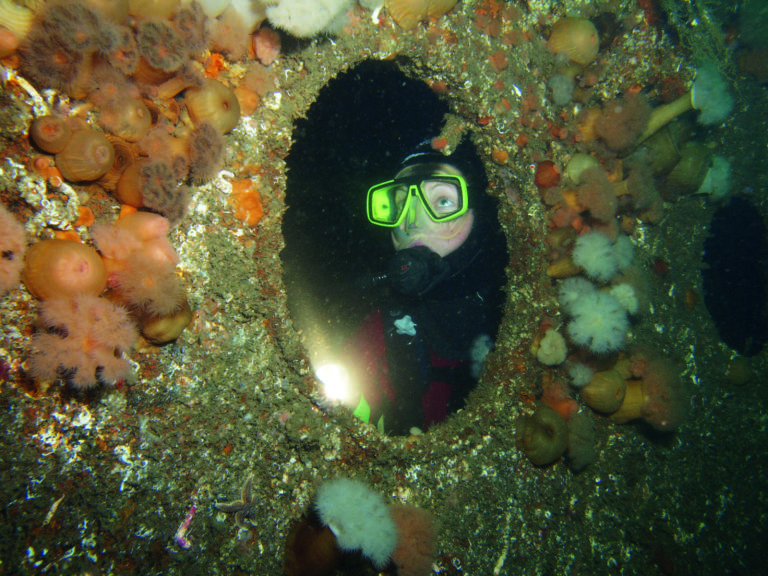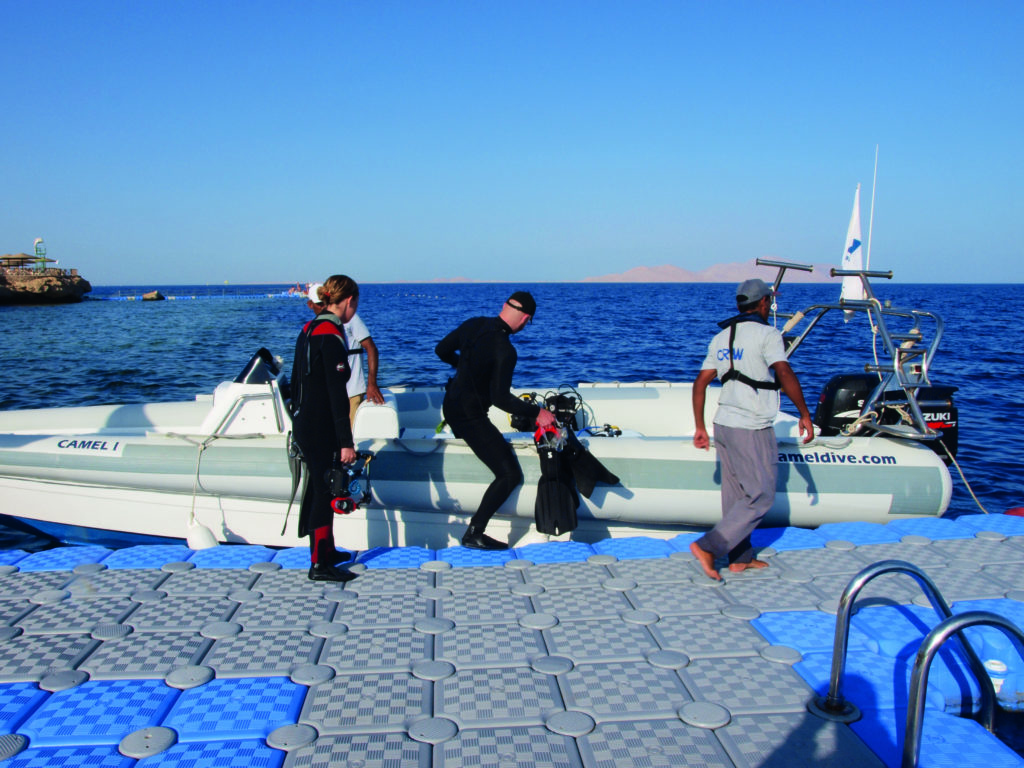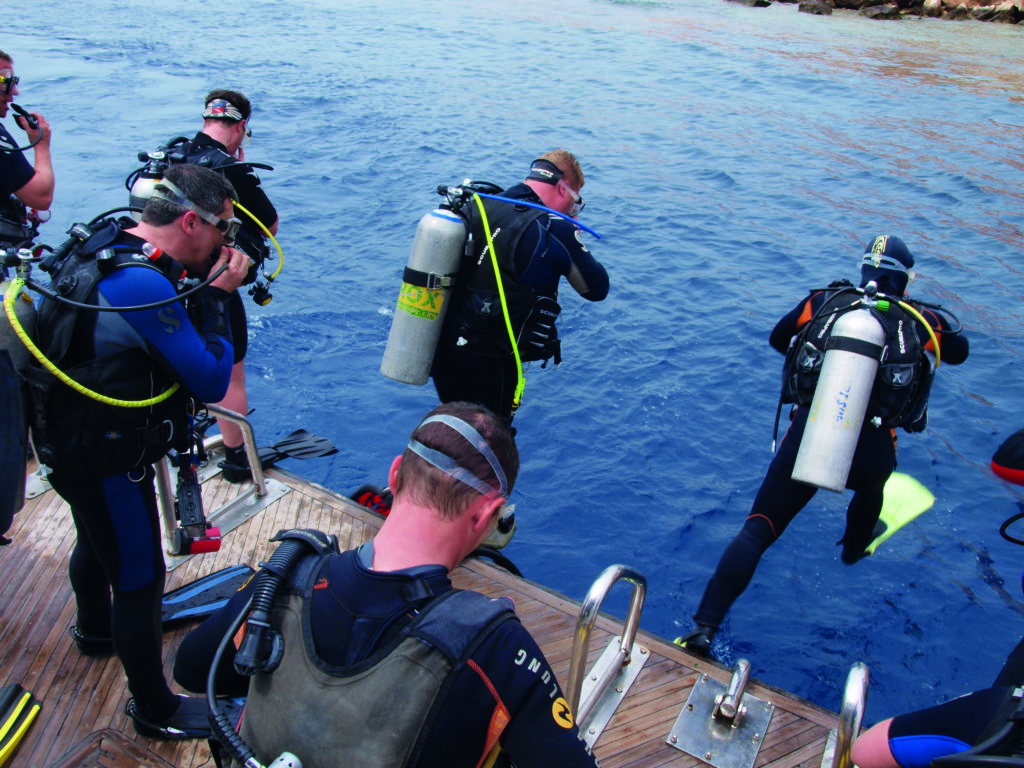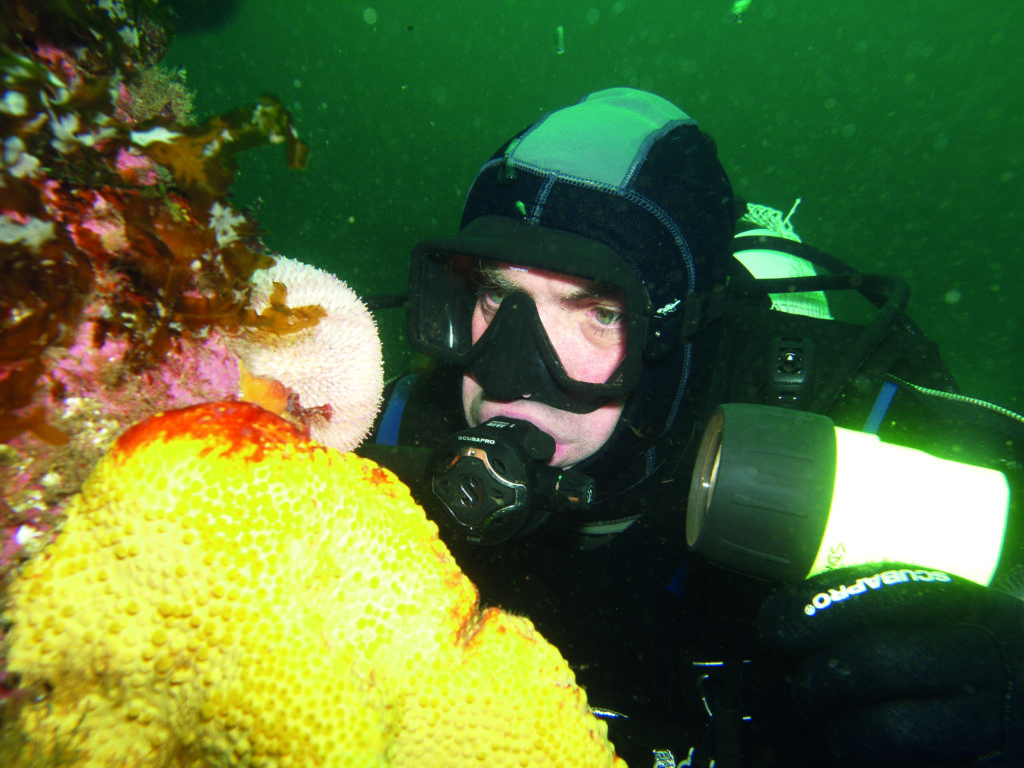Experienced diving educator MARTIN SAMPSON considers the nature of risk – and explains why a popular early dive computer gained an unjustified reputation. Photographs by MARK EVANS
People take risks when they go scuba diving. That’s a sweeping statement, I grant you, and I’m guessing that quite a few of you are thinking: “I don’t – I’m a safe diver”. In essence, however, we’re trusting some clever technology and deliberately immersing ourselves in an often cold fluid that we can’t breathe.
A substantial number of landlubbers out there regard us with a mixture of awe and envy, not to mention complete derision because they think we’re as mad as a box of prawns.
The rest of us, booted and neoprene-suited, think we’re normal. Of course, there is potential for harm and injury, but we all intend to go diving safely, don’t we? It’s just that sometimes, at the dive-site, this doesn’t happen.
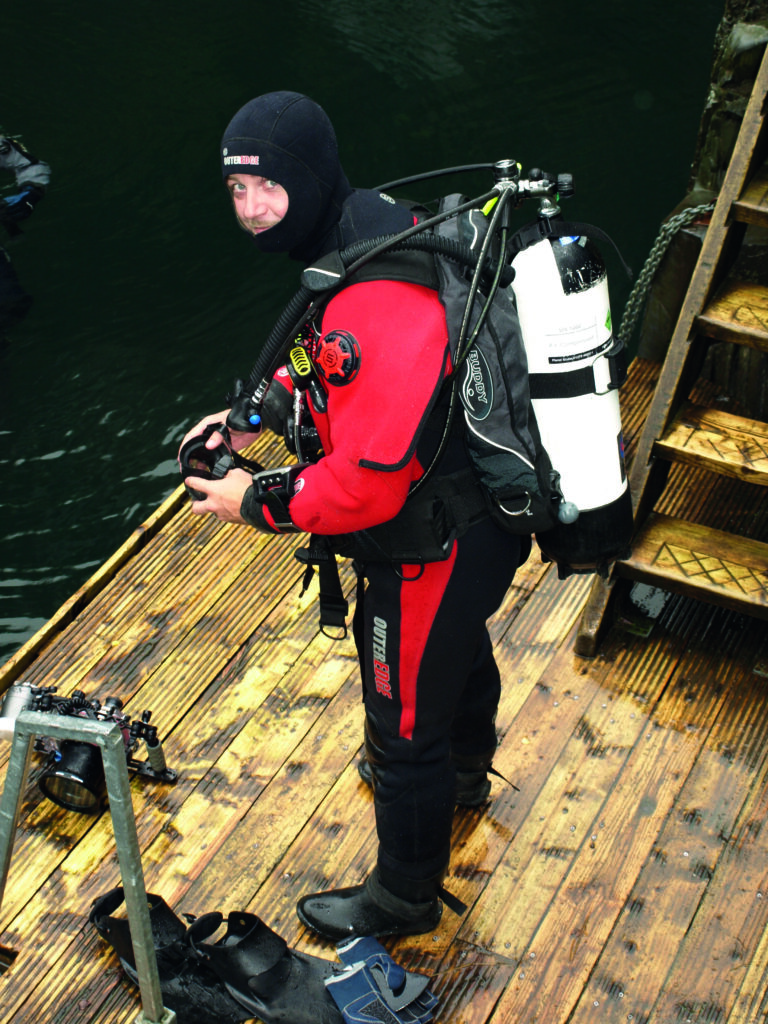
My early journey
In 1986 I dived with scuba diving equipment that included one of the first decompression computers. It was called the Edge. At that time there were only three computers on the market. The Edge and the Decobrain both cost around £600 at the time, and the third was the Dive Dynamics Aladin, which cost about £250.
‘If you had decompression illness while using a dive computer, it was much more likely that it would be with an Aladin on your wrist’
A popular misconception about dive computers at that time was that they allowed you to carry out any type of dive profile, including “sawtooth” profiles that involved multiple ascents and descents.
After a few cases of decompression illness proved that idea wrong, the popular phrase “ee was bent on an Aladin!” was coined.
Suspicion fell on the reliability of the brand, but it was outselling the other two units because it was more than £300 cheaper. Because there were so many around, if you had decompression illness while using a dive computer, it was much more likely that it would be with an Aladin on your wrist – for that reason.
It took a little longer for the diving community to appreciate that thousands of dives were being conducted with greater levels of safety simply because, for the first time, we had a reliable way of monitoring our ascent-rate.
Scrubbing through my equipment
Fast forward 30 years to 2016. Some of the fatalities that happened that year using rebreathers involved some pretty elementary errors, such as failing to change a scrubber canister in good time, or omitting to go through a pre-dive check list and then discovering a major fault – in the worst possible way.
The use of rebreathers is a rapidly emerging aspect of diving, but the potential risks inherent in the use of rebreathers themselves, such as carbon dioxide toxicity, are not specific to any one type of unit, any more than DCI was ever linked to any one brand of dive computer.
In the past 30-odd years, quality of design, engineering, materials and ergonomics of scuba diving equipment have all improved. But no matter what piece of kit you choose, it is likely to have a limitation of some sort.
It might be one of design – perhaps a lightweight regulator that is designed with travel to warm waters in mind rather than the Arctic Ocean. This is where training and information come into play. Good-quality instruction helps you to become aware, not just of your gear’s limitations, but also your own.
No matter how good the training provided by a diving instructor, your ability to retain it decreases dramatically without continued practice. So are you the sort of diver who thinks: “I haven’t been under water for months – I think I’ll book a refresher course!”
My to-do list
Over the past 30-odd years, time pressure has also changed, although not for the better. We tend to lead busier lives, made all the more immediate by 24/7 communications and social networking.
Many divers get through the daily stress of Monday to Friday by promising themselves a weekend’s diving. A late Friday night fuelled by high expectations (among other things) is followed by an early start on Saturday and a 200-mile drive to the coast. The possible outcomes are varied, but could include:
- Getting a speeding ticket on the way to the dive-site because you overslept.
- Not diving at all, because you left your regulator hanging in the shed.
- Not being able to get buoyancy control right because you couldn’t relax.
- Passing all responsibility for navigation and planning over to your buddy or diving instructor because you’re too tired to think about it.
- Having a problem with a piece of kit because you forgot to check it.
- Diving with that faulty kit because: “Hey, I’ve been looking forward to this dive all week!”
- Being cold, dehydrated or simply too tired to do a second dive.
- Completing an uncomfortable dive without major incident and accepting that you survived so you must have enjoyed it, because everyone else did.
- Realising that actually, today of all days, you just don’t feel up to it, so you’re not going to dive.
That last outcome could only have been bettered by realising on the Friday night that what you needed most was 12 hours’ sleep and a lie-in on Saturday morning. Perhaps one day of relaxed diving on the Sunday would have been better than trying to cram in two days of diving.
My parting thoughts
Diving and other adventure sports are popular because when they are properly planned and conducted you have to focus to achieve your goals. While focusing on those goals you become free of Monday-to-Friday stresses. From the car-sticker school of psychology: ‘Leave it all above you – go scuba diving.”
At some point in your training you were almost certainly told to abort a dive if you’re not happy. It would be even better to develop the self-awareness and sheer nerve to be able to say to your buddy: “I’m sorry, I’m just not up for this today.” If your buddy can’t handle that, find a different one.
We’re entering an exciting era with modern rebreathers that have some very clever fail-safes built in. All they need to work is a relaxed, switched-on, focused user. That could be you! Stay safe.
